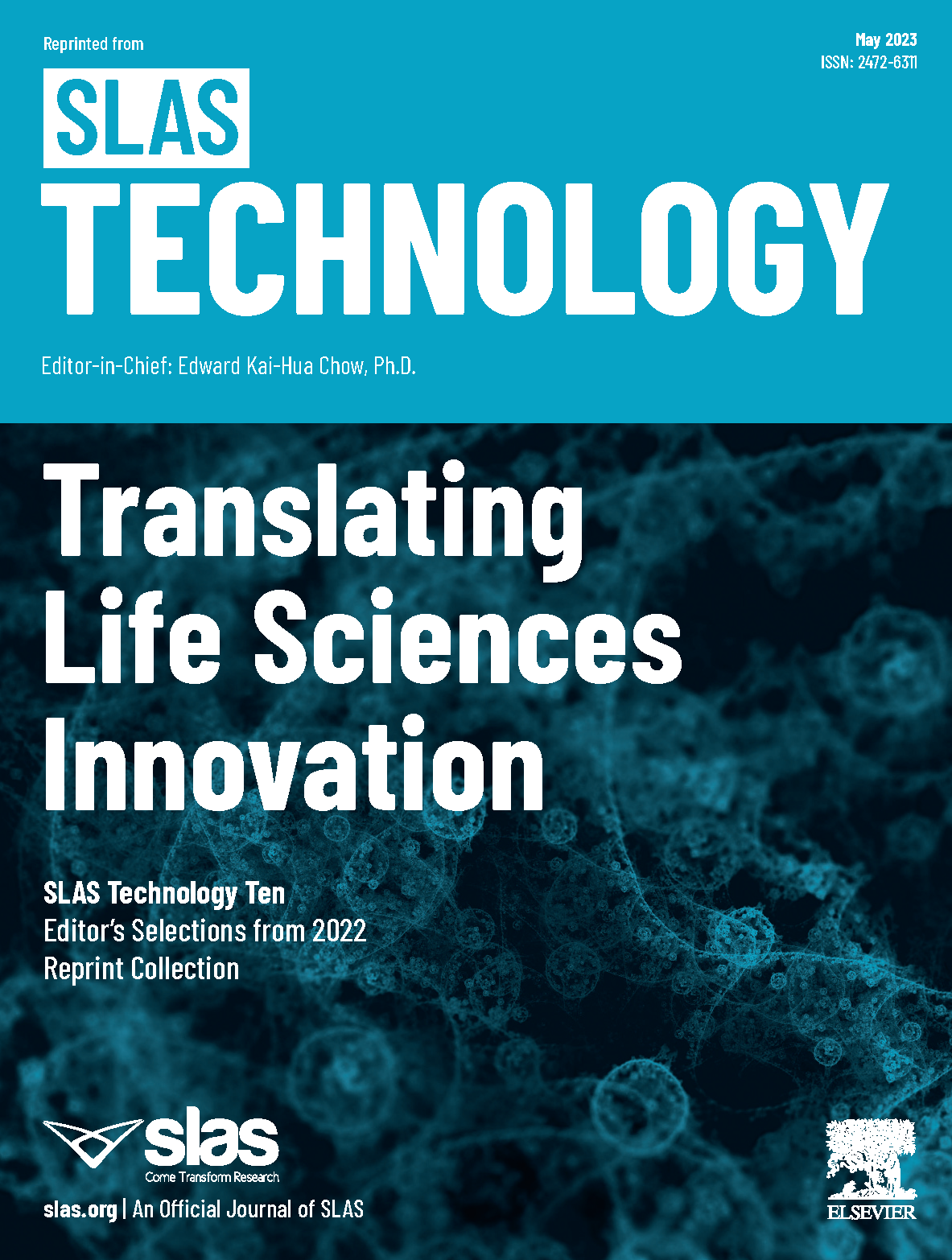Oak Brook, IL – The SLAS Technology Editor’s Top 10 for 2023 highlights technologies that address a broad range of unmet needs in both the laboratory and the clinic.
These top 10 articles include advances in microtechnology to improvements in molecular detection and chemical characterization through advances in microtechnology; how AI-driven technologies are enabling all aspects of life science and biomedical research and diagnostics and even clinics; and highlighting how automation continues to streamline complex high-throughput drug discovery and single-cell transcriptomic library preparation workflows.
SLAS Technology Editor-in-Chief Edward Kai-Hua Chow, Ph.D. (National University of Singapore), acknowledges the authors, editors and reviewers for their time and dedication in delivering fascinating research to SLAS Technology and its readers. The SLAS Technology’s Editor’s Top 10 editorial is published in Volume 28, Issue 1 of SLAS Technology.
Read the SLAS Technology Editor’s Top 10 articles below:
Comparison Between Franz Diffusion Cell and a novel Micro-physiological System for In Vitro Penetration Assay Using Different Skin Models By Ilaria Pulsoni, Markus Lubda, Maurizio Aiello, Arianna Fedi, Monica Marzagalli, Joerg von Hagen, Silvia Scaglione (SLAS Technology 2022, 27, 161-171)
Sorting single-cell microcarriers using commercial flow cytometers By Joseph de Rutte, Robert Dimatteo, Sheldon Zhu, Maani M. Archang, Dino Di Carlo (SLAS Technology 2022, 27, 150-159)
COVID-19 detection using chest X-ray images based on a developed deep neural network By Zohreh Mousavi, Nahal Shahini, Sobhan Sheykhivand, Sina Mojtahedi, Afrooz Arshadi (SLAS Technology 2022, 27, 63-75)
Simple assessment of viability in 2D and 3D cell microarrays using single step digital imaging Anna A. Popova, Markus Reischl, Daniel Kazenmaier, Haijun Cui, Timo Amberger, Pavel A. Levkin (SLAS Technology 2022, 27, 44-53)
Enabling high throughput drug discovery in 3D cell cultures through a novel bioprinting workflow By Martin Engel, Lisa Belfiore, Behnaz Aghaei, Margareta Sutija (SLAS Technology 2022, 27, 32-38)
Quantitative determination of uric acid using paper-based biosensor modified with graphene oxide and 5-amino-1,3,4-thiadiazole-2-thiol By Yaw-Jen Chang, Ming-Che Lee, You-Chiuan Chien (SLAS Technology 2022, 27, 54-62)
DeepImageTranslator: A free, user-friendly graphical interface for image translation using deep-learning and its applications in 3D CT image analysis By Run Zhou Ye, Christophe Noll, Gabriel Richard, Martin Lepage, Éric E. Turcotte, André C. Carpentier (SLAS Technology 2022, 27, 76-84)
AI-driven laboratory workflows enable operation in the age of social distancing By Diego Marescotti, Chandrasekaran Narayanamoorthy, Filipe Bonjour, Ken Kuwae, Luc Graber, Florian Calvino-Martin, Samik Ghosh, Julia Hoeng (SLAS Technology 2022, 27, 195-203)
A Biomimetic High Throughput Model of Cancer Cell Spheroid Dissemination onto Aligned Fibrillar Collagen By Hossam Ibrahim, Stephen D. Thorpe, Michael Paukshto, Tatiana S. Zaitseva, Wolfgang Moritz, Brian J. Rodriguez (SLAS Technology 2022, 27, 267-275)
Automation enables high-throughput and reproducible single-cell transcriptomics library preparation By David Kind, Praveen Baskaran, Fidel Ramirez, Martin Giner, Michael Hayes, Diana Santacruz, Carolin K. Koss, Karim C. el Kasmi, Bhagya Wijayawardena, Coralie Viollet (SLAS Technology 2022, 27, 135-142)
*****
SLAS Technology reveals how scientists adapt technological advancements for life sciences exploration and experimentation in biomedical research and development. The journal emphasizes scientific and technical advances that enable and improve:
- Life sciences research and development
- Drug delivery
- Diagnostics
- Biomedical and molecular imaging
- Personalized and precision medicine
SLAS (Society for Laboratory Automation and Screening) is an international professional society of academic, industry and government life sciences researchers and the developers and providers of laboratory automation technology. The SLAS mission is to bring together researchers in academia, industry and government to advance life sciences discovery and technology via education, knowledge exchange and global community building.
SLAS Technology: Translating Life Sciences Innovation, 2021 Impact Factor 2.813. Editor-in-Chief Edward Kai-Hua Chow, Ph.D., National University of Singapore (Singapore).
###


